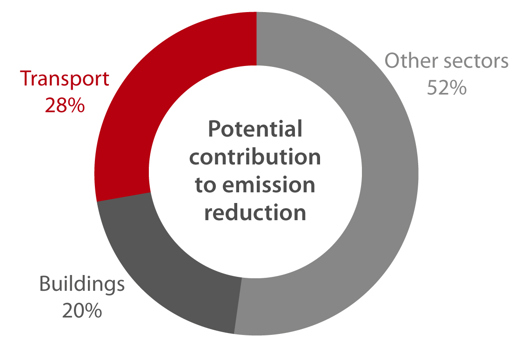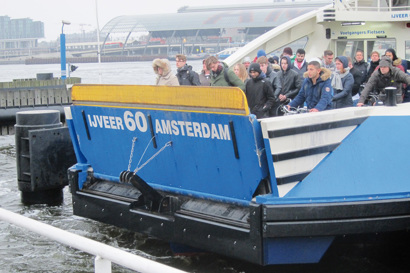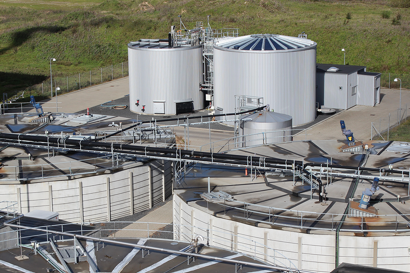
Cities will shape our future
The UN estimates that by 2050, the world’s population will reach about 9.8 billion – nearly 70% of whom will live in cities.
Cities need ambitious targets for energy efficiency, sector integration and electrification to reach the goals of the Paris Agreement. The technology is already here.

Doing the climate math: What a 1.5-degree pathway would take for urban areas
A new report from Navigant (2020) sets the concrete technology pathway for reaching the 1.5°C degree target by 2050, based on the significant potential of:
- Energy efficient heating and cooling of buildings, including district energy.
- Electrification of transport
- Sector integration
Main contributors to urban emission reductions

The Navigant study shows that implementation of existing technology solutions for electrification of transport, energy efficient heating and cooling of buildings, including district energy, and sector integration can bridge about half of the gap to reach the 1.5°C target in urban areas.
Remaining half of the accumulated urban emission reductions needed for a 1.5°C pathway will come from other sectors, mainly industry, electricity for appliances, and construction.
In other words, the needed technologies to future-proof our cities, meet the Paris Agreement, and safeguard air quality is ready. It is now about rolling it out at a much faster pace, while innovating new solutions in real-life city test zones.
Why cities?
The world’s cities occupy just 3% of the Earth’s land, but account for two-thirds of the world´s energy demand and 70% of global greenhouse gas emissions. More than 80% of people living in urban areas are exposed to air quality levels that exceed the World Health Organization (WHO) limits, largely caused by heating and cooling of buildings and transport based on fossil fuels. In other words, cities’ impact on climate and health is enormous.
The good news is that cities’ high density of facilities and infrastructure offer a unique opportunity to drive cost-effective technology innovation and exploit synergies between sectors to create a highly efficient energy system.
Cities can act as ambitious, inspirational regional front-runners that showcase new technology and create attractive places to live and work.
Dear Mayor, here are ready-made solutions for more energy efficiency in your city
Energy Efficient Heating and cooling of building (District Energy)
Electrification of transport
Sector integration
Explore other solutions and technologies
Resources
- 1.5°C in Urban Areas
- Three ways to accelerate the energy transition
- Getting the world back on track to meet its climate targets
- In a moment of urgency, put energy efficiency first
- To enable Europe’s clean energy future, we need to buckle up and couple up
- Connecting the dots to enable climate leadership at all levels









